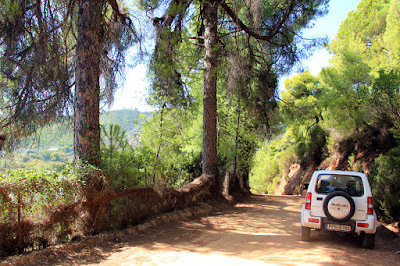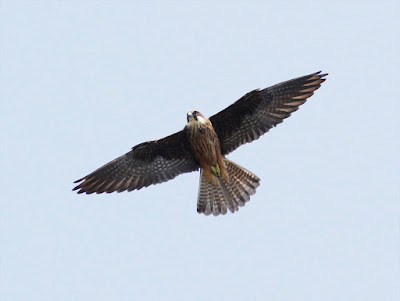Sue and I are back from Greece and as usual, up to our ears in catch-up with friends and family. Until I get up and running with birding I put together a few pictures of the last two weeks in Skiathos. Please "click the pics" for better views.
Two weeks of late September wall-to-wall sunshine, temperatures in the thirties and not a cloud in the deep blue Skiathos sky. I found myself feeling increasingly uncomfortable with the almost total lack of birdlife during what should be a period of peak migration. Yes, we saw House Sparrows, Collared Doves, swallows, and hundreds of the ubiquitous Hooded Crow and Yellow-legged Gull but had to search hard to find the limited number of migrants hiding from the burning midday sun.
Nr Ligaries, Skiathos
Agia Paraskevi, Skiathos
The Bourtzi, Skiathos Town
The Bourtzi, Skiathos Town
Skiathos Town
The ferry - Skopelos to Skiathos and vice versa
Where to go - Skiathos Town
Coffee Time - Skiathos Town
I have experienced this strange sensation before on Skiathos and also on islands such as Menorca, Lanzarote, and closer to home on Bardsey Island and North Ronaldsay. Such times reinforce the understanding of the effect of the weather on bird migration during spring and autumn when theoretically there should be migrant birds at every turn but when ideal holiday weather makes for poor birding. A drop or two of overnight rain or preferably one of the famous Skiathos thunderstorms would have made for interesting mornings but it was not to be.
It was in the relative cool of the hills and the monastery gardens that we found Spotted Flycatchers together with small numbers of Willow Warblers, Chiffchaffs, Blackcaps, Garden Warblers and Eastern Olivaceous Warblers. Up here close to the pine forests we saw Honey Buzzards circling and small numbers of Bee Eaters and swallows, both Common and Red-rumped.
Church at Evangelistria
To the Monastery
Spotted Flycatcher
Willow Warbler
Red-backed Shrike
Red-rumped Swallow
Hooded Crow
Unlike our own farmland Barn Swallow the Red-rumped Swallow is a bird of the open hilly country of southern Europe and Asia where they build quarter-sphere nests with a tunnel entrance lined with mud collected in their beaks. They normally nest under cliff overhangs in their mountain homes, but will readily adapt to buildings and bridges.
It doesn’t matter where you go in Skiathos. There’s always a Red-backed Shrike to enliven proceedings and inevitably one that lacks any red in the plumage but displays the autumn russets of a juvenile or female.
The Red-backed Shrike is a very common bird in all of Greece and the Greek Islands, and a bird well known to Aristotle, the original Greek birder. The Latin/scientific name of the Red-backed Shrike is Lanius collurio, the genus name, Lanius derived from the Latin word for "butcher" and the specific collurio is from Ancient Greek “kollurion”.
The Red-backed Shrike is a very common bird in all of Greece and the Greek Islands, and a bird well known to Aristotle, the original Greek birder. The Latin/scientific name of the Red-backed Shrike is Lanius collurio, the genus name, Lanius derived from the Latin word for "butcher" and the specific collurio is from Ancient Greek “kollurion”.
In the pine forests there are fire crews on permanent watch to ensure that help quickly reaches any conflagration. A few years ago forest fires in mainland Greece spread by strong winds across the waters of the Aegean to the islands of Skiathos and Skopelos where they devastated huge swathes of forest and claimed many lives. Only now have the forests recovered.
Our forest dwelling Jimny
From the forested Kanapitsa peninsula of Skiathos it is possible to see the church of Agios Ioannis Kastri out towards the neighbouring island of Skopelos and where scenes of Mamma Mia were filmed. The film runs through the summer season in the open air cinema in Skiathos Town. The church stands on top of a rock and provides amazing view to the coasts of Skopelos and to Alonissos. Its name actually means Saint John on the Castle, assuming that probably there was a small castle there in the past to protect the island from pirates.
Me? I'd rather be birding than watch that awful film. Log in soon for more birding.
Linking today with Eileen's Blog and Anni's Birding.
The "Mamma Mia" church of Agios Ianiss Kastri
Open Air Cinema - Skiathos Town
Me? I'd rather be birding than watch that awful film. Log in soon for more birding.
Linking today with Eileen's Blog and Anni's Birding.


















































.jpeg)












.jpg)












